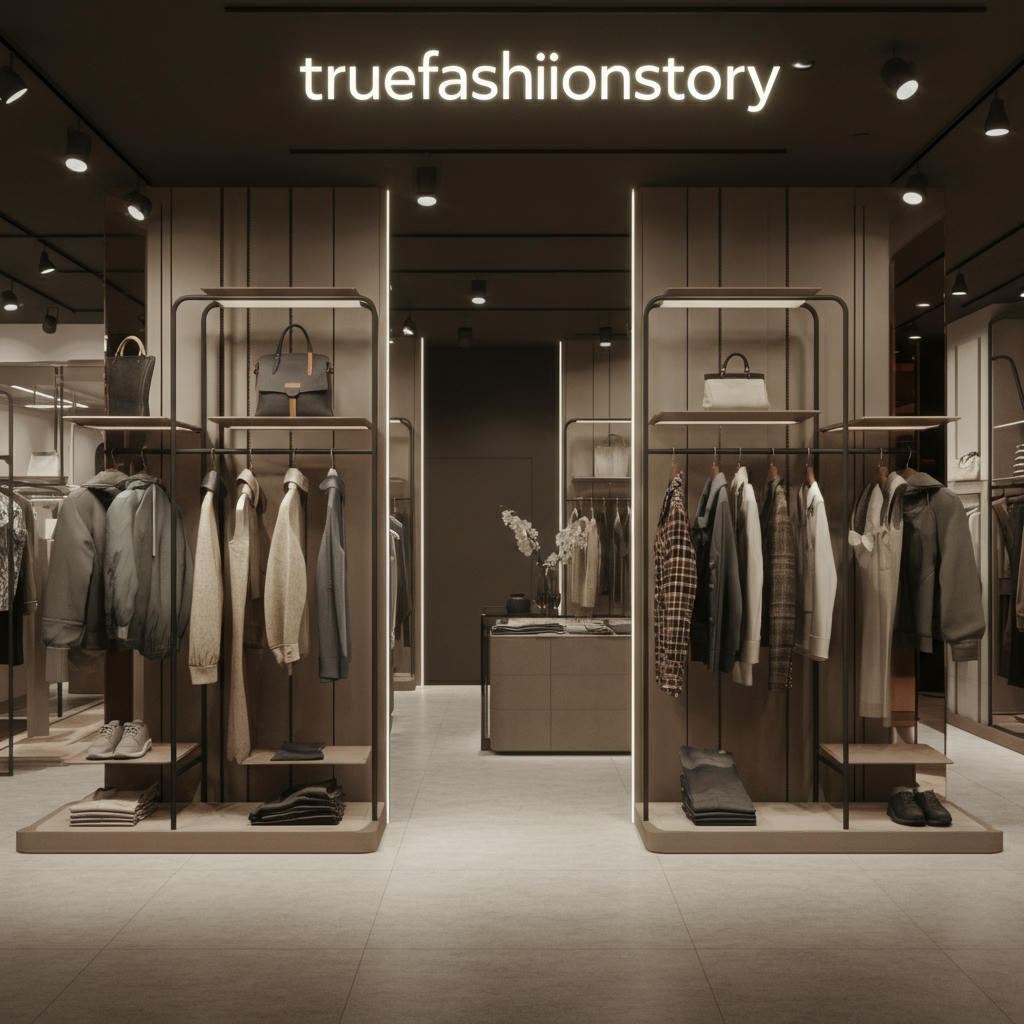When you walk into an Aritzia store or browse their website, you’ll find trendy pieces that look effortlessly chic. But many shoppers wonder: is Aritzia fast fashion? This question has become increasingly important as consumers become more conscious about their shopping habits and environmental impact.
Fast fashion has transformed how we buy clothes, offering trendy pieces at low prices with rapid turnover. However, this model comes with significant environmental and ethical concerns. Understanding where Aritzia fits in this landscape can help you make informed shopping decisions.
In this article, we’ll explore Aritzia’s business model, manufacturing practices, pricing, and sustainability efforts. We’ll compare them to traditional fast fashion brands and help you understand whether Aritzia deserves the fast fashion label. By the end, you’ll have a clear picture of what this Canadian retailer really represents.
What Is Fast Fashion?
Fast fashion refers to the rapid production of inexpensive clothing that mimics current luxury fashion trends. This business model focuses on speed and low costs, bringing runway-inspired designs to stores within weeks.
Key characteristics of fast fashion include:
- Rapid production cycles: New collections arrive weekly or bi-weekly
- Low prices: Affordable clothing accessible to most consumers
- Trend-driven designs: Quick copies of high-fashion looks
- Poor quality materials: Items designed for short-term wear
- High volume production: Mass manufacturing in developing countries
- Minimal worker protections: Often involves poor working conditions
- Environmental impact: Significant waste and pollution
Traditional fast fashion brands like H&M, Forever 21, and Zara have built entire business models around these principles. They prioritize quantity over quality, encouraging consumers to buy frequently and dispose of items quickly.
Understanding these characteristics helps us evaluate whether is Aritzia fast fashion or if it operates differently from these traditional players in the market.
Aritzia’s Business Model Explained
Aritzia operates as a contemporary fashion retailer, positioning itself between fast fashion and luxury brands. Founded in Vancouver in 1984, the company has built its reputation on curated collections and quality basics.
The brand’s business model includes several distinct elements:
Vertical Integration: Aritzia controls much of its supply chain, from design to retail. This approach allows them to maintain quality standards while managing costs effectively.
House Brands Strategy: Rather than selling multiple external brands, Aritzia focuses on its own private labels like Babaton, Wilfred, and The Group by Babaton. This gives them complete control over design and production.
Seasonal Collections: Unlike fast fashion’s constant new arrivals, Aritzia typically releases seasonal collections with some mid-season updates. This creates a more traditional fashion calendar approach.
Curated Shopping Experience: The brand emphasizes personal styling and customer service, creating a boutique-like experience even in larger stores.
Quality Focus: Aritzia markets itself on superior fabrics and construction compared to typical fast fashion retailers.
This model suggests that when asking is Aritzia fast fashion, we need to consider whether their approach aligns more with contemporary fashion or the rapid-turnover model of traditional fast fashion brands.
Manufacturing and Production Practices
Aritzia’s manufacturing practices reveal important insights about whether the brand qualifies as fast fashion. The company has been relatively transparent about their production process compared to many retailers.
Global Supply Chain: Aritzia manufactures clothing in various countries including China, Vietnam, Turkey, and Peru. They work with approximately 60 suppliers worldwide, which is relatively small compared to major fast fashion brands that may work with hundreds.
Quality Control Standards: The company implements quality control measures throughout their supply chain. They conduct regular factory audits and maintain specific standards for their manufacturing partners.
Production Timeline: Aritzia’s production cycles are longer than typical fast fashion brands. While fast fashion can go from design to store in 2-4 weeks, Aritzia’s process typically takes several months.
Fabric Selection: The brand emphasizes higher-quality fabrics in their marketing, often featuring natural fibers like wool, silk, and cotton alongside synthetic blends.
Supplier Relationships: Aritzia tends to maintain long-term relationships with their suppliers rather than constantly switching to find the cheapest options.
However, questions remain about working conditions and wages in their supply chain. As noted by fashion sustainability experts at truefashionstory.com, transparency about labor practices remains a challenge across the fashion industry.
These practices suggest a different approach from pure fast fashion, though some elements overlap with the broader ready-to-wear fashion industry’s standard practices.
Pricing Strategy: Premium or Accessible?
Aritzia’s pricing strategy provides crucial evidence when determining is Aritzia fast fashion. The brand positions itself in the contemporary fashion market, with prices that reflect this positioning.
Price Range Analysis:
- Basic t-shirts: $40-80
- Dresses: $80-300
- Outerwear: $150-500
- Accessories: $30-150
Comparison to Fast Fashion:
Fast fashion brands typically offer:
- Basic t-shirts: $5-20
- Dresses: $15-50
- Outerwear: $30-100
Value Proposition: Aritzia justifies higher prices through:
- Premium fabric selection
- Better construction quality
- Timeless designs
- Superior fit and styling
Accessibility Concerns: While not as expensive as luxury brands, Aritzia’s prices exclude many budget-conscious consumers. This pricing strategy deliberately targets middle to upper-middle-class shoppers.
Sales and Discounts: Unlike fast fashion brands that frequently offer deep discounts, Aritzia’s sales are typically seasonal and less dramatic, usually offering 20-40% off rather than 70-80% markdowns.
The pricing strategy clearly differentiates Aritzia from fast fashion, though it raises questions about accessibility and whether higher prices automatically mean more ethical production.
Quality Assessment: How Does Aritzia Compare?
Quality represents a key differentiator when evaluating whether is Aritzia fast fashion. Customer experiences and product reviews provide insights into how Aritzia’s quality measures against both fast fashion and higher-end brands.
Construction Quality:
- Seams are generally well-finished with proper serging
- Buttons and hardware feel substantial
- Zippers typically function smoothly
- Lining quality varies by price point
Fabric Durability:
- Natural fiber pieces generally hold up well to washing
- Some synthetic blends show pilling after extended wear
- Cashmere and wool items require proper care but last multiple seasons
- Basic cotton pieces maintain shape better than fast fashion equivalents
Design Longevity:
- Styles tend to be classic rather than heavily trendy
- Color palettes focus on neutrals and seasonally appropriate hues
- Silhouettes emphasize timeless appeal over momentary trends
Customer Satisfaction:
Reviews consistently mention items lasting multiple years with proper care. However, some customers note quality inconsistencies between different product lines and price points.
Comparison Table: Fast Fashion vs. Aritzia Quality
|
Aspect |
Fast Fashion |
Aritzia |
|---|---|---|
|
Fabric Weight |
Thin, lightweight |
Medium to heavy weight |
|
Seam Quality |
Basic, may fray |
Well-finished |
|
Hardware |
Plastic, breaks easily |
Metal, durable |
|
Expected Lifespan |
6-12 months |
2-5 years |
|
Care Requirements |
Machine wash, disposable |
Proper care recommended |
Environmental Impact and Sustainability Efforts
Environmental considerations are crucial when determining is Aritzia fast fashion, as sustainability has become a defining characteristic separating responsible brands from fast fashion.
Current Sustainability Initiatives:
Aritzia has implemented several environmental programs:
- Sustainable fabrics: Increasing use of organic cotton, recycled polyester, and responsibly sourced wool
- Packaging reduction: Efforts to minimize packaging waste
- Responsible sourcing: Partnerships with suppliers committed to environmental standards
- Take-back programs: Limited clothing recycling initiatives
Areas for Improvement:
- Transparency: Limited public reporting on environmental metrics
- Carbon footprint: No published carbon neutrality goals
- Textile waste: Unclear policies on overstock and returned merchandise
- Water usage: Limited information about water conservation in production
Industry Comparison:
Compared to fast fashion giants, Aritzia shows more environmental awareness. However, they lag behind truly sustainable fashion brands that prioritize circular economy principles and complete supply chain transparency.
Consumer Impact:
Higher prices and better quality encourage consumers to buy less frequently and keep items longer, naturally reducing environmental impact compared to disposable fast fashion consumption patterns.
The brand’s sustainability efforts suggest movement away from fast fashion principles, though significant room for improvement remains.
Aritzia vs. Traditional Fast Fashion Brands
Direct comparison helps answer whether is Aritzia fast fashion by examining key operational differences.
H&M Comparison:
- New arrivals: H&M adds hundreds of new items weekly; Aritzia updates seasonally
- Price point: H&M averages $10-30 per item; Aritzia ranges $50-200
- Quality: H&M prioritizes low cost; Aritzia emphasizes durability
- Target market: H&M targets mass market; Aritzia focuses on contemporary segment
Zara Comparison:
- Design speed: Zara copies runway trends within weeks; Aritzia develops original designs over months
- Store experience: Zara emphasizes quick shopping; Aritzia promotes styling services
- Brand identity: Zara follows trends; Aritzia creates signature aesthetic
Forever 21 Analysis:
- Volume: Forever 21 stocks thousands of items; Aritzia maintains curated selection
- Demographics: Forever 21 targets teens and young adults; Aritzia appeals to 20-40 age range
- Longevity: Forever 21 items designed for short-term wear; Aritzia pieces intended for multiple seasons
Shein Examination:
- Production: Shein operates on ultra-fast fashion model; Aritzia follows traditional seasonal approach
- Quality control: Shein minimal oversight; Aritzia maintains stricter standards
- Pricing: Shein under $20 average; Aritzia significantly higher
These comparisons clearly distinguish Aritzia from traditional fast fashion operations, though some overlapping characteristics exist in their global manufacturing approach.
Consumer Behavior and Shopping Patterns
Understanding how customers interact with Aritzia provides insights into whether the brand operates as fast fashion. Consumer behavior patterns reveal important differences from typical fast fashion shopping habits.
Purchase Frequency:
Aritzia customers typically shop 2-4 times per year, often making seasonal purchases or replacing worn items. This contrasts sharply with fast fashion customers who may shop weekly or monthly for new trends.
Average Transaction Value:
The higher price point naturally leads to larger but less frequent purchases. Customers often buy multiple items during a single shopping trip rather than making frequent small purchases.
Item Retention:
Reviews and customer feedback indicate that Aritzia pieces remain in wardrobes for multiple years. Many customers report owning items for 3-5 years or longer, suggesting a different relationship with the clothing than typical fast fashion consumption.
Shopping Motivation:
Customers often cite quality, fit, and timeless style as primary motivators rather than following specific trends or seeking the lowest prices.
Return Behavior:
Higher return rates for fit and quality issues suggest customers have higher expectations, contrasting with fast fashion’s “good enough” acceptance threshold.
Brand Loyalty:
Strong repeat customer base indicates satisfaction with quality and design, typical of contemporary fashion brands rather than trend-chasing fast fashion retailers.
Ethical Considerations and Labor Practices
Labor practices significantly impact whether is Aritzia fast fashion, as ethical treatment of workers represents a key differentiator between responsible fashion and exploitative fast fashion.
Supply Chain Transparency:
Aritzia provides some information about their manufacturing partners but lacks the comprehensive transparency seen in truly ethical fashion brands. They publish a supplier list but limited details about working conditions.
Labor Standards:
The company states commitment to fair labor practices and conducts supplier audits. However, they don’t publish detailed reports about wage levels, working hours, or specific worker protections.
Industry Certifications:
Limited participation in recognized labor certification programs compared to leading ethical fashion brands. This makes it difficult to verify their claims about worker treatment.
Geographic Considerations:
Manufacturing in countries with varying labor protection standards raises questions about consistent ethical practices across their supply chain.
Improvement Areas:
- Wage transparency: No public information about living wages for workers
- Worker voice: Limited evidence of worker feedback mechanisms
- Third-party monitoring: Unclear extent of independent oversight
Positive Elements:
- Long-term supplier relationships suggest stability for workers
- Higher price points theoretically allow for better labor practices
- Company statements indicate awareness of ethical responsibilities
The ethical picture remains mixed, showing some positive elements but lacking the comprehensive transparency and third-party verification seen in leading ethical fashion brands.
Key Takeaways: Understanding Aritzia’s Position
After examining multiple aspects of Aritzia’s business model, several key insights emerge about whether is Aritzia fast fashion:
Evidence Against Fast Fashion Classification:
- Higher price points that discourage frequent purchasing
- Seasonal collections rather than constant new arrivals
- Quality focus with better materials and construction
- Longer product development cycles
- Customer retention of items for multiple years
Areas of Concern:
- Global manufacturing in countries with varying labor standards
- Limited sustainability transparency and goals
- Trend influence in some product lines
- Accessibility issues due to pricing
Contemporary Fashion Positioning:
Aritzia operates in the contemporary fashion segment, sitting between fast fashion and luxury brands. This position involves:
- Premium pricing for middle-market consumers
- Focus on quality and design over quantity
- Seasonal rather than weekly product updates
- Investment in customer experience and service
Consumer Impact:
The brand encourages different consumption patterns from fast fashion:
- Fewer but higher-quality purchases
- Longer item lifecycle
- Investment mindset rather than disposable attitude
Final Assessment:
While Aritzia shares some characteristics with the broader fashion industry, including global manufacturing and trend awareness, it operates distinctly differently from traditional fast fashion brands.
Frequently Asked Questions
Is Aritzia considered fast fashion?
No, Aritzia is not considered fast fashion. While it operates in the global fashion industry with some similar manufacturing approaches, it differs significantly from fast fashion in pricing, quality, production speed, and consumer behavior patterns. Aritzia positions itself as a contemporary fashion brand with higher quality standards and seasonal collections.
How does Aritzia’s quality compare to fast fashion brands?
Aritzia generally offers better quality than fast fashion brands. Their items typically feature better fabrics, construction, and hardware. Customers report items lasting 2-5 years with proper care, compared to fast fashion items that may only last 6-12 months. However, quality can vary across different Aritzia product lines.
Why is Aritzia more expensive than fast fashion?
Aritzia’s higher prices reflect their contemporary market positioning, quality materials, better construction, design development costs, and brand positioning. Unlike fast fashion that prioritizes low costs and high volume, Aritzia focuses on quality and customer experience, which requires higher price points.
Is Aritzia sustainable?
Aritzia has made some sustainability efforts, including using more sustainable fabrics and implementing take-back programs. However, they lack comprehensive sustainability reporting and ambitious environmental goals seen in leading sustainable fashion brands. They’re making progress but have significant room for improvement.
Does Aritzia use ethical manufacturing?
Aritzia states commitment to ethical manufacturing and conducts supplier audits, but they lack the transparency and third-party verification seen in leading ethical fashion brands. They work with approximately 60 suppliers globally and maintain some standards, but more transparency about wages and working conditions would strengthen their ethical position.
How often does Aritzia release new items?
Aritzia follows a more traditional seasonal approach, typically releasing major collections for fall/winter and spring/summer, with some mid-season updates. This is much slower than fast fashion brands that may add hundreds of new items weekly.
Should I buy from Aritzia if I care about sustainability?
If you’re choosing between Aritzia and fast fashion brands, Aritzia is generally the better choice for sustainability due to higher quality and longer-lasting items. However, if sustainability is your primary concern, consider brands with stronger environmental commitments and transparency.
Conclusion
So, is Aritzia fast fashion? The evidence clearly indicates that Aritzia operates as a contemporary fashion brand rather than fast fashion. While they share some characteristics with the broader fashion industry, including global manufacturing and trend awareness, their business model fundamentally differs from fast fashion in key ways.
Aritzia’s higher price points, focus on quality, seasonal collections, and customer behavior patterns align more closely with contemporary fashion brands than fast fashion retailers. Their customers typically purchase fewer items that last longer, creating a different consumption pattern from the frequent, disposable purchases characteristic of fast fashion.
However, this doesn’t mean Aritzia is perfect. The brand has room for improvement in sustainability transparency, ethical manufacturing disclosure, and environmental impact reduction. Consumers interested in truly sustainable fashion should continue pushing for greater accountability and transparency.
For shoppers weighing their options, Aritzia represents a middle ground between fast fashion and luxury brands. While not the most sustainable option available, it offers better quality and longevity than fast fashion alternatives, potentially leading to more responsible consumption patterns.
Understanding where brands like Aritzia fit in the fashion landscape helps consumers make informed decisions aligned with their values and budget. As the fashion industry continues evolving, transparency and accountability will likely become even more important factors in brand evaluation.





